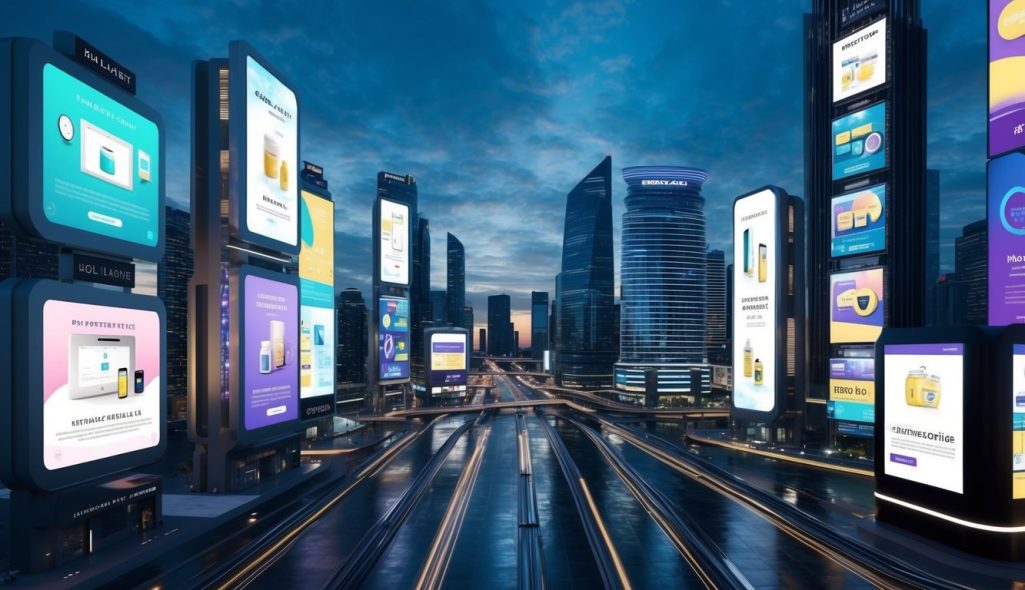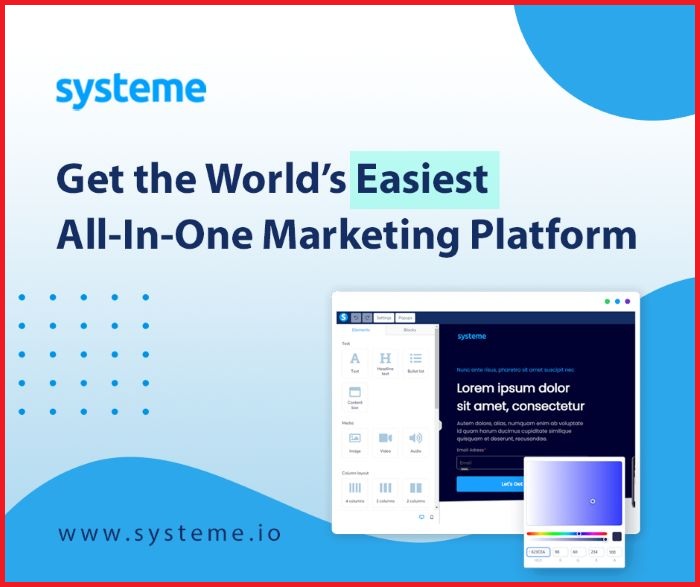Advertising trends for 2025 show significant shifts in how businesses will engage with consumers. Online platforms will see a strong leaning as digital advertising is set to surpass 80% of total ad spend. As businesses adapt, new strategies focus on creating genuine connections with audiences, highlighting the importance of trust and authenticity.

Social media plays a crucial role in maintaining brand presence and reaching target demographics. As AI-driven strategies continue to grow, innovation in these technologies will shape future advertising tactics. Emphasizing relatable content can make the biggest impact in the post-pandemic landscape.
You’ll also notice that other platforms, like ecommerce, will dominate ad placements. Brands are incorporating trends like short-form videos and soundless advertising, aiming for more engaging experiences. As these changes unfold, the key to success lies in staying adaptable and aligning with emerging consumer behaviors.
Key Takeaways
- Digital ads dominate future ad spend.
- Authentic connections build brand trust.
- Innovation shapes advertising strategies.
The Evolution of Digital Advertising
Digital advertising is rapidly changing, driven by shifts in media channels, advancements in artificial intelligence, and evolving privacy regulations. Understanding these changes helps you anticipate future trends and adapt strategies to maintain a competitive edge.
From Traditional to Digital Media Channels
The shift from traditional to digital media channels has transformed how you reach audiences. Television and print ads were once the mainstay but now stand in the shadow of digital platforms. Methods like programmatic advertising allow for real-time bidding on ad space, making ad placements more efficient and targeted.
Social media channels have become central in advertising strategies, providing interactive and engaging ways to connect with audiences. Platforms like Facebook, Instagram, and TikTok offer tools that let you target specific demographics and interests, enhancing your ability to engage effectively.
With digital media’s rise, tracking campaign success has also evolved. Analytics tools provide insights into customer behavior, enabling data-driven decisions and adjustments. As you adapt to these digital channels, you position yourself to benefit from enhanced targeting and engagement strategies.
The Impact of Generative AI on Advertising
Generative AI is revolutionizing your approach to advertisement creation. It provides tools to produce personalized content at scale, making ads more relevant. AI can assist in content ideation, editing, and tailoring ad experiences according to consumer behavior.
This technology helps automate repetitive tasks, freeing up time for strategic planning. AI’s ability to analyze data quickly allows you to understand consumer preferences and optimize ad campaigns. By incorporating generative AI, you can deliver more engaging and personalized ad experiences to your audience.
AI-driven personalization significantly impacts customer engagement. By analyzing previous interactions and preferences, AI can create highly tailored ads, enhancing the connection with potential customers. Integrating AI into your advertising efforts ensures you stay ahead in delivering targeted, impactful ads.
Privacy Changes and the Decline of Third-Party Cookies
The decline of third-party cookies is reshaping how you track and target consumers online. This change follows increasing privacy concerns and regulations, pushing advertisers to rethink data strategies. Google’s Privacy Sandbox initiative aims to create privacy-preserving mechanisms for tracking and targeting users.
Advertisers are moving towards first-party data, collected directly from your consumers. This transition involves developing direct relationships with audiences, gathering insights through newsletters, website interactions, and in-app behavior.
Adapting to these changes involves exploring alternative tracking methods, such as browser fingerprinting or contextual advertising. As third-party data reliance diminishes, prioritizing privacy and transparency will be vital in maintaining consumer trust and ensuring effective ad targeting.
Social Media’s Role in Advertising
In 2025, social media will become an even more vital part of advertising strategies. Platforms like TikTok and Instagram Reels will lead the way in content engagement, while social commerce grows in importance. Additionally, influencer marketing will increasingly rely on micro and nano-influencers to reach niche audiences.
Rising Platforms: TikTok and Instagram Reels
TikTok and Instagram Reels are set to dominate the social media landscape in 2025. Their short-form video content captivates users, offering brands a creative outlet to engage audiences with dynamic storytelling. TikTok’s algorithm effectively highlights trending content, boosting visibility for advertisers. Interactive content like challenges and behind-the-scenes glimpses can foster community and brand loyalty.
Instagram Reels enhances discovery through its Explore page, offering brands another avenue to amplify engagement. With user numbers steadily increasing, these platforms provide fertile ground for innovative marketing techniques. Stay updated on platform-specific trends and tools to maximize the potential of this kind of social media advertising.
The Growth of Social Commerce
Social commerce is transforming how consumers shop online. By 2025, the integration of shopping features on social media will simplify the buying process. Users will increasingly turn to platforms for product discovery and purchasing. Brands can benefit by setting up storefronts directly on platforms like Instagram, where shopping tags streamline the experience.
Using interactive ads and personalized recommendations effectively targets users more likely to convert. With an increase in mobile shopping, designing content optimized for small screens becomes essential. Engage your audience by showcasing user-generated content and reviews, reinforcing trust in your products. Stay aware of privacy concerns and transparency to balance personalization while respecting user privacy.
Influencer Marketing: Micro and Nano-influencers
Influencer marketing in 2025 will focus on authenticity and community. Micro-influencers, with followers ranging from 1,000 to 100,000, offer niche expertise and closer relationships with their audience. Their high engagement rates make them valuable partners for targeted campaigns. Brands can tap into these intimate connections for authentic product promotion.
Nano-influencers, though having smaller followings, present even more personal ties with their audience. They are particularly effective within local markets or highly specialized niches. Collaborating with these influencers can drive organic growth and foster trust among consumers. When selecting influencers, consider their audience alignment and genuine interest in your products rather than follower count alone.
Content Is King
In 2025, content creation remains central to successful marketing strategies. Emphasizing the value of short-form videos and harnessing user-generated content is crucial. Understanding how content marketing ties into SEO will further enhance online visibility.
The Surge of Short-Form Video Content
Short-form video content continues to gain traction, with platforms like YouTube Shorts driving engagement. These videos, typically under a minute, capture attention quickly and effectively. They’re perfect for storytelling and brand exposure in a concise format.
You should leverage this trend by creating snackable content that’s easy to consume on the go. Focus on strong visuals and compelling storytelling to engage viewers instantly. Consider platforms that prioritize short-form content to reach wider audiences and potential customers.
Leveraging User-Generated Content
User-generated content (UGC) is a powerful tool for building trust and community. Encouraging your audience to share their experiences with your products or services creates authenticity. UGC can range from social media posts to reviews and testimonials.
By showcasing content created by your users, you enhance credibility and strengthen brand loyalty. Plan campaigns that motivate your audience to participate and share their content. Highlight your biggest supporters to foster a sense of inclusion and appreciation.
Content Marketing and SEO
Integrating content marketing with search engine optimization (SEO) is vital for online success. Focus on creating content that answers user queries and offers value. Well-optimized content improves visibility and drives organic traffic to your platforms.
Identify keywords relevant to your industry and strategically incorporate them into your content. This not only boosts search rankings but also aligns your content with user intent. Keep your audience’s interests in mind to craft engaging and informative materials.
Innovation in Advertising Technologies
In 2025, advertising will see significant advancements driven by new technologies. Augmented reality (AR) and virtual reality (VR), AI technology, and voice search will shape how marketers engage with audiences.
Augmented Reality (AR) and Virtual Reality (VR) in Marketing
AR and VR are revolutionizing how consumers experience products. You can immerse potential buyers in a virtual world where they interact with your offerings. For instance, allowing users to visualize furniture in their homes can boost purchase confidence. Likewise, virtual experiences, like trying on clothes using a smartphone, enhance online shopping. These technologies are pivotal for creating engaging, interactive ads that capture attention and drive sales. As AR and VR tools become more accessible, you’ll find more creative ways to integrate them into marketing strategies.
AI Technology and Machine Learning
AI technology and machine learning are transforming data analysis and customer targeting. By leveraging these tools, you can tailor ads to your audience with precision, predicting buying patterns and preferences. Machine learning algorithms improve over time, honing in on what appeals most to your target market. This means your campaigns are more effective and resource-efficient. Automating tasks like ad placements and budgeting ensures that you consistently reach the right people at optimal times. Moreover, AI-driven personalization enhances consumer experiences, fostering deeper connections.
Voice Search and Conversational Marketing
Voice search is changing how consumers find products and services. You need to optimize your content for voice-activated devices, as more people rely on them for quick searches. Conversational marketing further deepens interactions by providing real-time customer support and product recommendations. Chatbots and smart assistants, powered by AI, enable seamless communication with users, answering queries and facilitating transactions. This approach not only boosts engagement but also enhances customer satisfaction, making your brand more appealing in a competitive market. By focusing on these technologies, you ensure your marketing remains relevant and impactful.
The Future of Advertising Experiences
Advertising in 2025 will heavily focus on creating unique experiences for consumers. Interactive and personalized ads will become more prevalent, emphasizing brand loyalty and customer engagement. Additionally, sustainable and inclusive branding will play a crucial role in appealing to modern consumers.
Personalized and Interactive Ads
In 2025, personalized advertising will be more sophisticated with the help of AI and big data. You will see ads tailored to your preferences and behaviors. This involves using data analytics to create content that resonates with your interests.
Interactive ads, like quizzes or augmented reality experiences, offer engaging ways to capture attention. By interacting with these ads, you create a two-way dialogue, making the experience more memorable. These strategies result in higher user engagement and better conversion rates. As more platforms support these ad formats, you should expect a more dynamic advertising landscape.**
The Importance of Brand Loyalty and Customer Engagement
Strengthening brand loyalty and customer engagement is crucial in the highly competitive market of 2025. Advertising strategies will prioritize building long-term relationships with you. This involves authentic storytelling that connects on an emotional level.
You are likely to support brands that show genuine commitment to their customers. Engaging campaigns that invite feedback help build trust and foster a sense of community. Keeping you engaged through loyalty programs and exclusive content also enhances your connection to the brand.
Creating a Sustainable and Inclusive Brand Image
Sustainability and inclusion are now fundamental parts of creating a brand image. Brands will increasingly highlight eco-friendly practices and inclusivity in their marketing efforts. You will notice more ads focused on promoting ethical values and diversity.
Using eco-conscious materials and reducing waste in operations can improve a brand’s appeal to environmentally-aware consumers. In terms of inclusion, ads featuring diverse groups and embracing various cultures help create a broader connection. You expect brands to reflect societal values, and meeting these expectations can drive your loyalty and support.
Adaptation to Consumer Behavior
In 2025, brands are focusing on adapting to consumer shifts by integrating innovative strategies. Companies are using methods like shoppable content and prioritizing the use of first-party data while closely watching customer experience trends.
Shoppable Content and Livestreaming
Shoppable content is changing how you interact with brands. It’s becoming easier to make purchases directly from social media posts or during live streams. Platforms like Instagram and TikTok enable you to click on items in videos and buy them immediately. This combines entertainment with shopping, making the experience more interactive.
Livestreaming is gaining popularity, letting you engage with brands in real-time. During these sessions, you can ask questions and see products demonstrated. This direct interaction can lead to more informed purchasing decisions. As a result, businesses are investing in these technologies to reach customers more effectively.
The Shift Towards First-Party Data
With privacy becoming a more important concern, companies are shifting towards first-party data. This data is gathered directly from you instead of relying on third-party sources. By using only necessary and consensual data, companies can create more personalized experiences for you.
Collecting your preferences, purchase history, and online behavior helps brands tailor their marketing strategies. This can result in offers and content that are more relevant to your tastes. Moving to first-party data also builds trust, as it shows a commitment to respecting your privacy and preferences.
Anticipating Customer Experience Trends
Brands are becoming more proactive in meeting your expectations. They’re using technology to predict what you want from their services and products. This can mean seamless online experiences, faster service, or more personalized interactions in both digital and physical spaces.
Companies are focusing on improving the customer journey by analyzing feedback and behavior patterns. They aim to provide a consistently high level of service, whether you’re shopping online or visiting a store. By anticipating your needs, brands can enhance satisfaction and build stronger relationships with you.
Strategies for Future-Proofing Marketing
To stay ahead in the rapidly evolving marketing world, you should focus on programmatic advertising, leverage strategic data analysis, and adapt your strategy to soundless video ads. These areas are essential for engaging audiences and optimizing your campaigns effectively.
Programmatic Advertising and Real-Time Engagement
Programmatic advertising automates the buying of ad space using advanced algorithms. This approach allows you to purchase digital advertising in real time. It makes targeting more accurate, optimizing your marketing budget.
Real-time engagement can improve user experience by ensuring the delivery of relevant messages when your audience is most active online. The combination of programmatic methods with live interaction helps create personalized content, increasing your campaign’s success.
To implement this effectively, consider tools that facilitate dynamic ad placement and prioritize platforms where your audience spends the most time.
Leveraging Data Analysis for Strategic Insights
Data analysis is key to crafting a successful digital marketing strategy. By analyzing customer data, you can gain insights into behavior, preferences, and trends. This allows you to tailor your campaigns to be more efficient and relevant.
Using predictive analytics, you can forecast future trends and consumer needs, helping you stay ahead of industry shifts. Invest in data analytics tools that provide real-time insights and integrate seamlessly with your marketing platforms. This will help you make informed decisions and adjust your strategies quickly.
Adapting to Soundless Ads in a Video-Driven Market
Video advertising is becoming increasingly popular, but many viewers now watch videos on mute. Adapting to soundless ads involves creating videos that convey your message visually. Use eye-catching graphics, subtitles, and engaging visuals to capture attention.
Part of your digital marketing strategy should focus on crafting ads that are effective without sound. This can involve working closely with designers and video editors to ensure your message is clear and impactful. Consider testing your ads muted to understand how well they perform with your audience.
Frequently Asked Questions
In 2025, advertising is set to experience significant changes driven by technological advances and shifts in consumer expectations. Key areas of focus include the integration of AI, augmented reality in campaigns, data privacy, and consumer behavior trends.
How is AI expected to transform advertising strategies in 2025?
AI is projected to play a major role in creating personalized ad content by analyzing data such as browsing habits and purchase history. This technology will help brands deliver relevant messages to consumers, enhancing engagement and building trust.
What role will augmented reality play in advertising campaigns by 2025?
Augmented reality is anticipated to bring immersive experiences to ads, allowing consumers to interact with products virtually. This can lead to increased interest and sales, as potential buyers are able to visualize products in a more lifelike context.
In what ways are brands preparing for evolving data privacy regulations in 2025 advertising?
To comply with stricter data privacy regulations, brands are focusing on transparency and obtaining explicit consumer consent for data use. Implementing more secure data management practices will be crucial for maintaining consumer trust while leveraging data for targeted advertising.
How will consumer behavior trends impact advertising techniques in 2025?
With the rise of ecommerce and short-form video popularity, brands are adapting their strategies to meet changing consumer preferences. Authentic and engaging content is becoming a priority, aiming to capture shorter attention spans and enhance digital interactions.
What are the anticipated challenges for cross-channel advertising in 2025?
Achieving consistency in messaging across various platforms is a key challenge. As consumers switch between devices and channels, ensuring a cohesive brand experience will require advanced tools and strategies to manage and track multi-channel campaigns effectively.
How might the global economic outlook influence advertising budgets in 2025?
Ad spending is likely to be impacted by economic factors. Fluctuations in budgets may occur based on global financial stability. Brands may need to adjust their advertising strategies. They should focus on cost-effective approaches like digital campaigns to maximize ROI in uncertain economic conditions.





